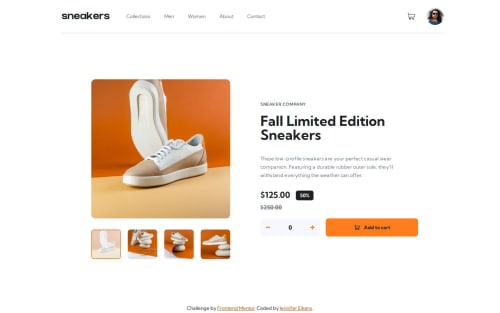E-commerce product page built with React and TailwindCSS

Solution retrospective
I am proud of my implementation of the image gallery and the lightbox.
I also feel good about the fact that, in this project, I put the data into separate files to reference from the components, which is something I only just learned to do from feedback on my previous project (where I had hard-coded the data).
What challenges did you encounter, and how did you overcome them?There were a lot of things I struggled with, as this was definitely the most advanced project I have done so far.
This is definitely a good thing though as I learned a lot. I had never coded an image gallery and a lightbox before. I also didn't feel super confident passing down state variables before this project, but now I feel like I really got the hang of it.
At first I felt overwhelmed by all the functionalities I would have to implement, but the more I thought about it and came up with a structure and ideas, the more confident I felt that I would be able to do it.
What specific areas of your project would you like help with?My one main issue is with centering the open shopping cart on mobile screens. I positioned it absolutely, which works for bigger screens, but I just haven't been able to figure out how to center it on the page on small screens. I don't want to use a fixed position because I don't want it to cover the other content when I scroll. Someone please tell me how to solve this issue, as I know my current solution to this isn't a good one.
Another thing I haven't managed to figure out is how to prevent the nav links from moving up a little to accommodate for the added border at the bottom upon hovering.
Other than that, I don't have any specific questions right now, but any feedback is welcome!
Please log in to post a comment
Log in with GitHubCommunity feedback
No feedback yet. Be the first to give feedback on Jenny Eikens's solution.
Join our Discord community
Join thousands of Frontend Mentor community members taking the challenges, sharing resources, helping each other, and chatting about all things front-end!
Join our Discord